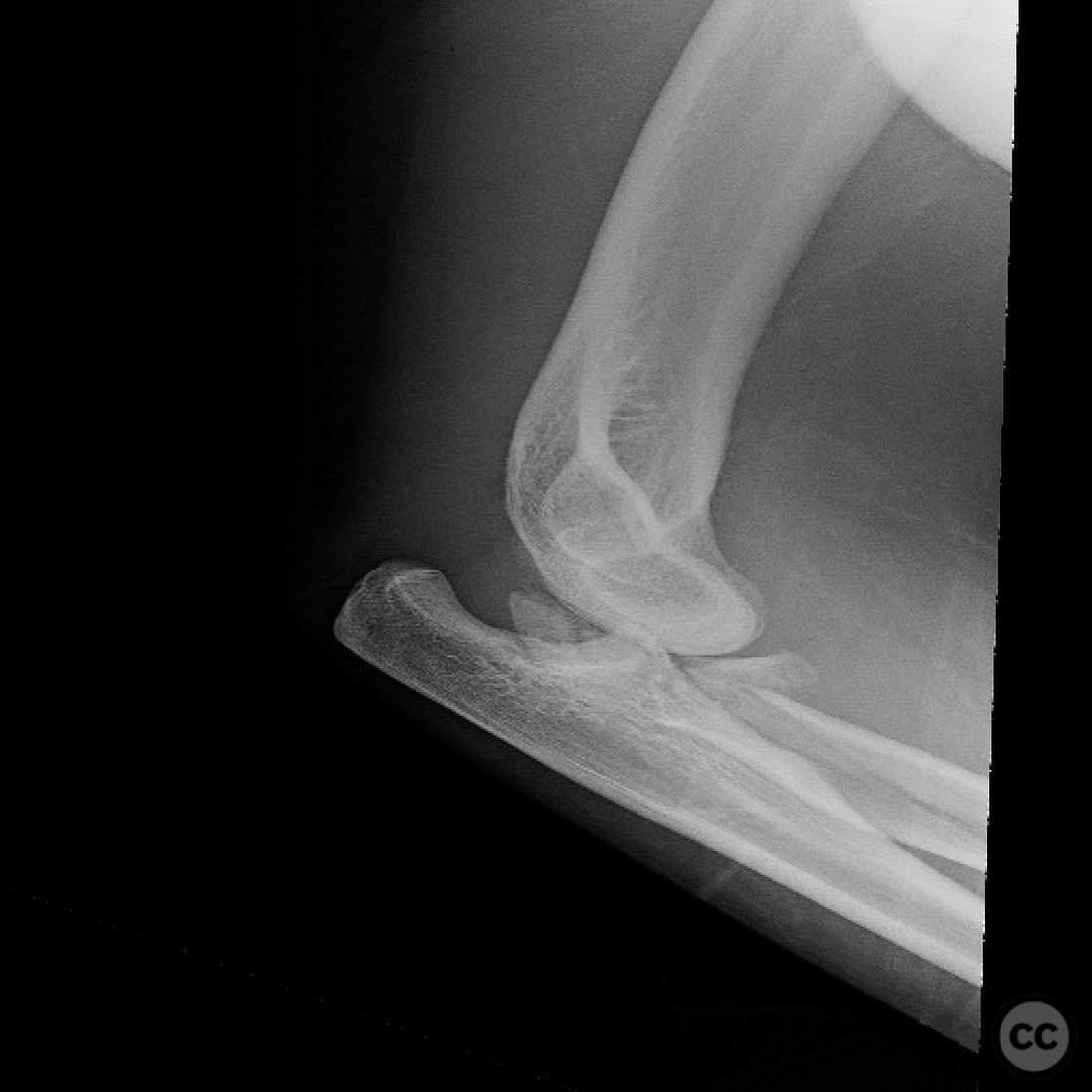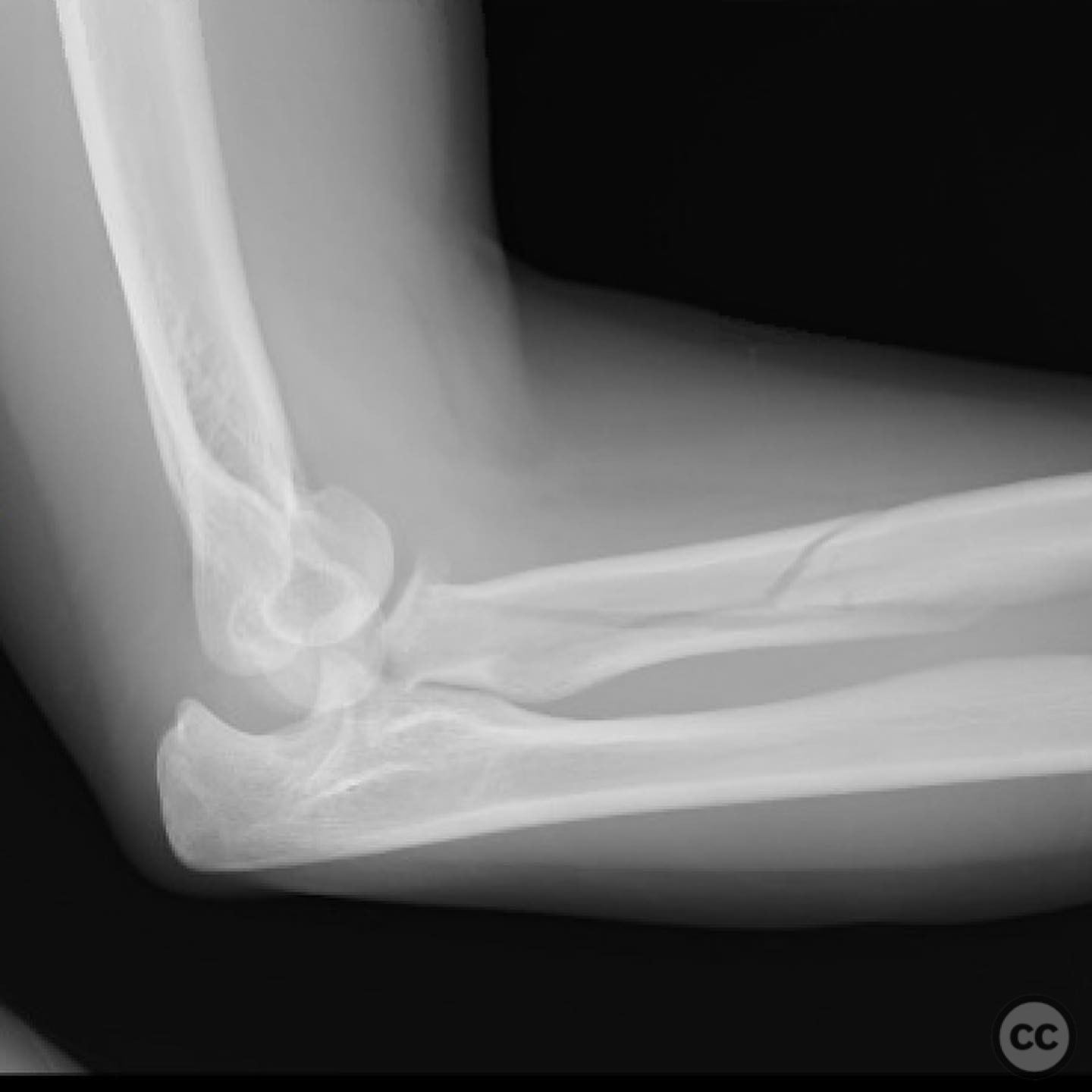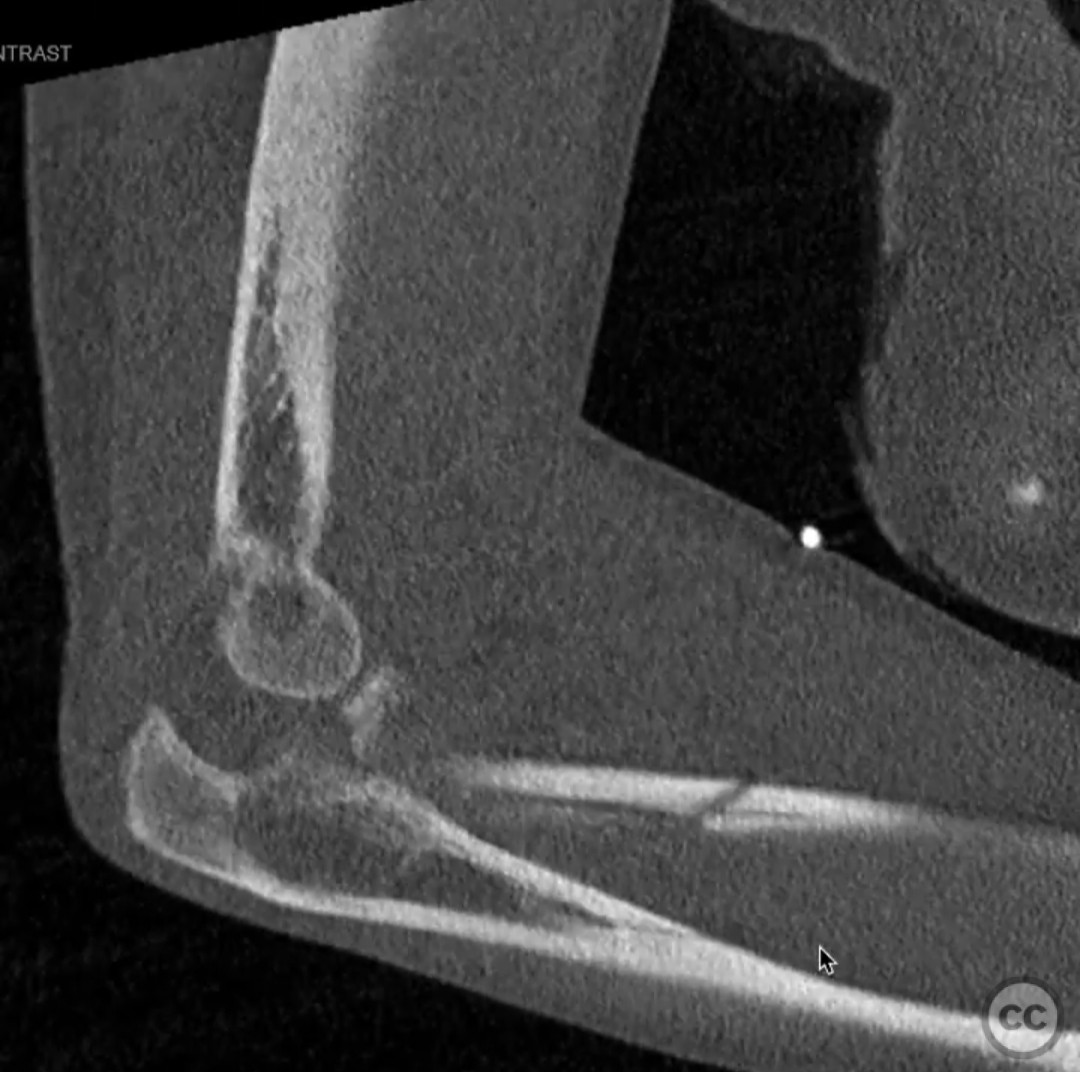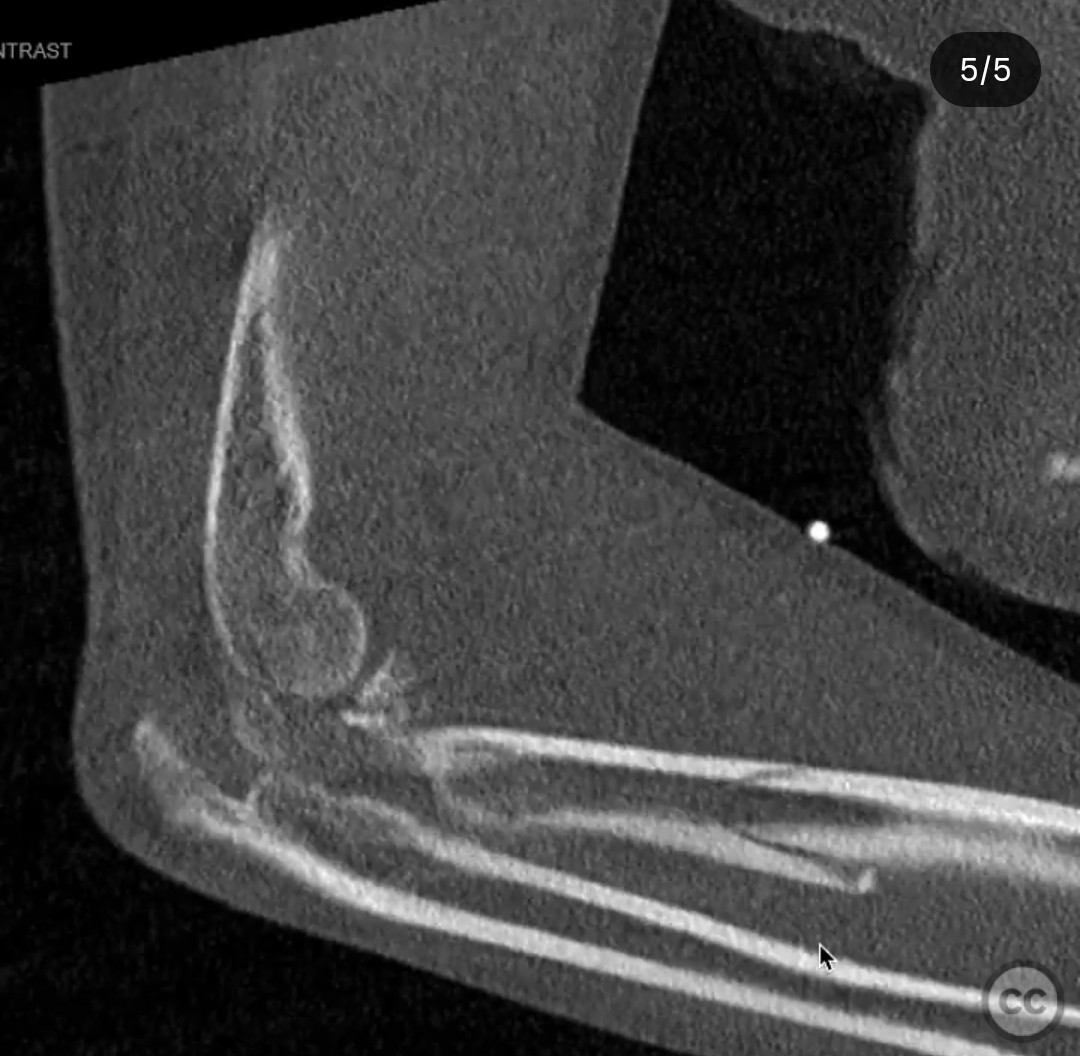Terrible Triad Elbow Injury with Proximal Radial Shaft Fracture
Score and Comment on this Case
Clinical Details
Clinical and radiological findings: A 33-year-old female sustained an injury from a fall while bouldering, resulting in a posterolateral elbow dislocation, a comminuted radial head fracture with more than four fragments, a coronoid tip avulsion, and a contiguous proximal radial shaft fracture. This constellation of injuries is classified as a terrible triad of the elbow. Initial radiographs confirmed the dislocation and fractures, while clinical examination suggested disruption of the lateral ulnar collateral ligament (LUCL).
Preoperative Plan
Planning remarks: The preoperative plan involved addressing the radial head fracture with arthroplasty due to its comminution, repairing the LUCL, and fixing the proximal radial shaft fracture. The coronoid tip avulsion was deemed insignificant for stability and was not planned for repair. The volar Henry approach was chosen for the proximal radius fixation due to its safety regarding the posterior interosseous nerve (PIN).
Surgical Discussion
Patient positioning: The patient was positioned supine on the operating table with the arm placed on an arm board, allowing for full access to the elbow and forearm.
Anatomical surgical approach: A Kocher approach was utilized to access the lateral elbow, allowing for removal and sizing of the radial head. Subsequently, a volar Henry approach was employed to fix the proximal radial shaft fracture. The supinator muscle was managed carefully to avoid injury to the PIN.
Operative remarks:The surgeon noted that the radial head was severely comminuted, necessitating replacement rather than open reduction and internal fixation (ORIF). The LUCL and common extensor origin were repaired following radial head arthroplasty. The coronoid tip avulsion was ignored as it did not contribute significantly to instability. Intraoperative assessment confirmed elbow stability through all motion arcs without requiring a medial approach for medial ulnar collateral ligament (MUCL) repair.
Postoperative protocol: Postoperatively, the patient was placed in a splint for 8 days, followed by a thermoplastic removable brace set at 90 degrees of flexion and neutral rotation. Motion exercises were initiated five times daily, focusing on pronation-supination with elbows at the side and active extension with passive flexion while supine with shoulder forward flexed to 90 degrees. Motion was liberalized at 6 weeks.
Follow up: Not specified
Orthopaedic implants used: Radial head prosthesis, internal fixation device for proximal radial shaft fracture.
Search for Related Literature

orthopaedic_trauma
- United States , Seattle
- Area of Specialty - General Trauma
- Position - Specialist Consultant

Industry Sponsership
contact us for advertising opportunities






elbow dislocation_ 2) comminuted radial head fracture (more than 4 parts) 3) coronoid tip a_4.jpg)
elbow dislocation_ 2) comminuted radial head fracture (more than 4 parts) 3) coronoid tip a_5.jpg)
elbow dislocation_ 2) comminuted radial head fracture (more than 4 parts) 3) coronoid tip a_6.jpg)
elbow dislocation_ 2) comminuted radial head fracture (more than 4 parts) 3) coronoid tip a_7.jpg)
elbow dislocation_ 2) comminuted radial head fracture (more than 4 parts) 3) coronoid tip a_9.jpg)
elbow dislocation_ 2) comminuted radial head fracture (more than 4 parts) 3) coronoid tip a_8.jpg)
elbow dislocation_ 2) comminuted radial head fracture (more than 4 parts) 3) coronoid tip a_3.jpg)
elbow dislocation_ 2) comminuted radial head fracture (more than 4 parts) 3) coronoid tip a_2.jpg)
elbow dislocation_ 2) comminuted radial head fracture (more than 4 parts) 3) coronoid tip av(.jpg)
elbow dislocation_ 2) comminuted radial head fracture (more than 4 parts) 3) coronoid tip a_1.jpg)
Article viewed 84 times
13 Jul 2025
Add to Bookmarks
Full Citation
Cite this article:
Surname, Initial. (2025). Terrible Triad Elbow Injury with Proximal Radial Shaft Fracture. Journal of Orthopaedic Surgery and Traumatology. Case Report 3798343 Published Online Jul 13 2025.